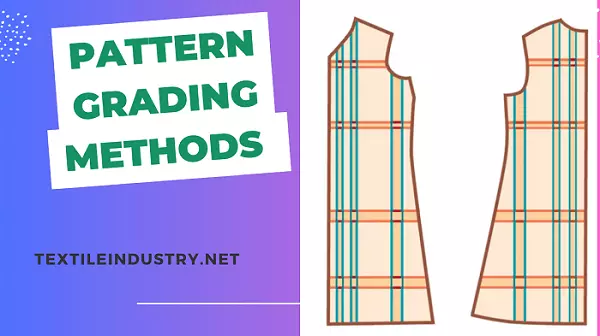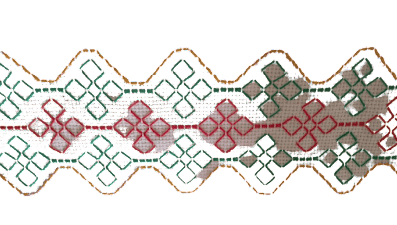A pattern is a preliminary layer, drawing, or sampling method for creating the shape garments panel. Grading is the naming of different parts of the drawn pattern by numbering. Pattern grading is to develop garment patterns from the base size to the other sizes of the same garment. This article will discuss Pattern Grading Methods in the Apparel industry.
The apparel industry is a complex and ever-evolving field, with countless processes and techniques used to create functional and fashionable garments. One such process is pattern grading, which is a crucial step in producing garments that are sized to fit a wide range of people. In this article, we’ll look closer at pattern grading methods in the apparel industry and explore some of the most used techniques.
What is Pattern Grading?
Pattern grading is the process of taking a base pattern and increasing or decreasing its size to create a range of sizes for a garment. This process is essential in the apparel industry because it allows manufacturers to create garments that fit body shapes and sizes.
Pattern grading involves carefully calculating and adjusting the proportions of each piece in the pattern. It ensures that the main garment fits perfectly. This process requires a high level of precision and attention to detail, as even small miscalculations can result in garments that are ill-fitting or uncomfortable to wear.
Pattern grading is a critical process in the apparel industry that involves creating a range of sizes for a garment from a base pattern. It is essential to ensure that the finished garment fits customers of all shapes and sizes, without compromising on design or quality. The grading process is an intricate and complex one, and there are various methods that apparel manufacturers can use to achieve accurate and consistent results. Manual grading is the traditional method of pattern grading, where a skilled pattern grader will measure and adjust the pattern by hand, using a set of graded rules. This method involves creating a new pattern for each size by adjusting the original pattern to the required measurements. However, manual grading is a time-consuming and labor-intensive process, and errors can easily occur, leading to inconsistencies in the finished garment.
Computer-aided grading (CAG) is a more modern method of pattern grading that uses computer software to automate the grading process. CAG software can automatically create a range of sizes for a garment from a base pattern, using pre-set grading rules or custom grading rules created by the manufacturer. This method is faster and more accurate than manual grading, and can also reduce the risk of errors and inconsistencies. However, CAG software requires a significant initial investment and may require additional training for employees.

Different Pattern Grading Methods
There are several grading methods used in the apparel industry, each with its own advantages and disadvantages. The techniques which are uses for grading:
1. Cut and Spread Method
This method involves cutting the pattern pieces apart and spreading them by a set amount to increase the size of the garment. The pieces are then taped onto a new sheet of paper, and the process is repeated for each size in the range.
2. Computer-Aided Design (CAD)
Computer-Aided Design (CAD): With CAD software, grading can be done digitally, saving time and reducing the risk of errors. This method involves creating a base pattern in the software and then inputting grading rules to automatically create the different sizes.
3. Add and Subtract Method
This method involves adding or subtracting a set amount from each pattern piece to increase or decrease the size of the garment. This method is faster than the cut-and-spread method but may not be as accurate.
- Pattern Grading Rulers: These rulers are specially designed to assist with the grading process, with different lines representing different sizes. The pattern pieces are laid out on the ruler, and the size lines are traced to create the graded pattern.
In addition to manual grading and CAG, there are other methods of pattern grading that manufacturers may use, depending on the specific requirements of their products. These methods include:
- Nesting: Nesting is a method of pattern grading that involves laying out multiple patterns on a single piece of fabric. This can reduce waste and increase efficiency in the cutting process, as multiple garments can be cut from a single piece of fabric.
- Flat grading: Flat grading is a method of pattern grading that involves adjusting the measurements of a pattern in a single direction, such as length or width. This method is used for simple garments or for garments that require only minor adjustments between sizes.
- Circular grading: Circular grading is a method of pattern grading that involves adjusting the measurements of a pattern in multiple directions, such as length, width, and depth. This method is often used for more complex garments or for garments that require significant adjustments between sizes.
Whatever method is used, pattern grading is a crucial step in the apparel manufacturing process. Accurate and consistent pattern grading ensures that garments fit customers of all shapes and sizes, and helps to reduce the risk of errors and inconsistencies in the finished garment. Manufacturers must choose the grading method that best suits their needs, taking into account factors such as the complexity of the garment, the desired level of accuracy, and the available resources.
Conclusion
In conclusion, pattern grading is a critical process in the apparel industry that requires a high level of skill and accuracy. There are various methods of pattern grading (Pattern Grading Methods) available to manufacturers, including manual grading, computer-aided grading, nesting, flat grading, and circular grading. Each method has its own advantages and disadvantages, and manufacturers must choose the method that best suits their needs. Basically, Regardless of the method used, accurate and consistent pattern grading is essential to ensure that garments fit customers of all shapes and sizes and meet the high standards of the apparel industry.
- Additionally, You may love to read: Responsibilities of CAD Manager in the Garments Industry


